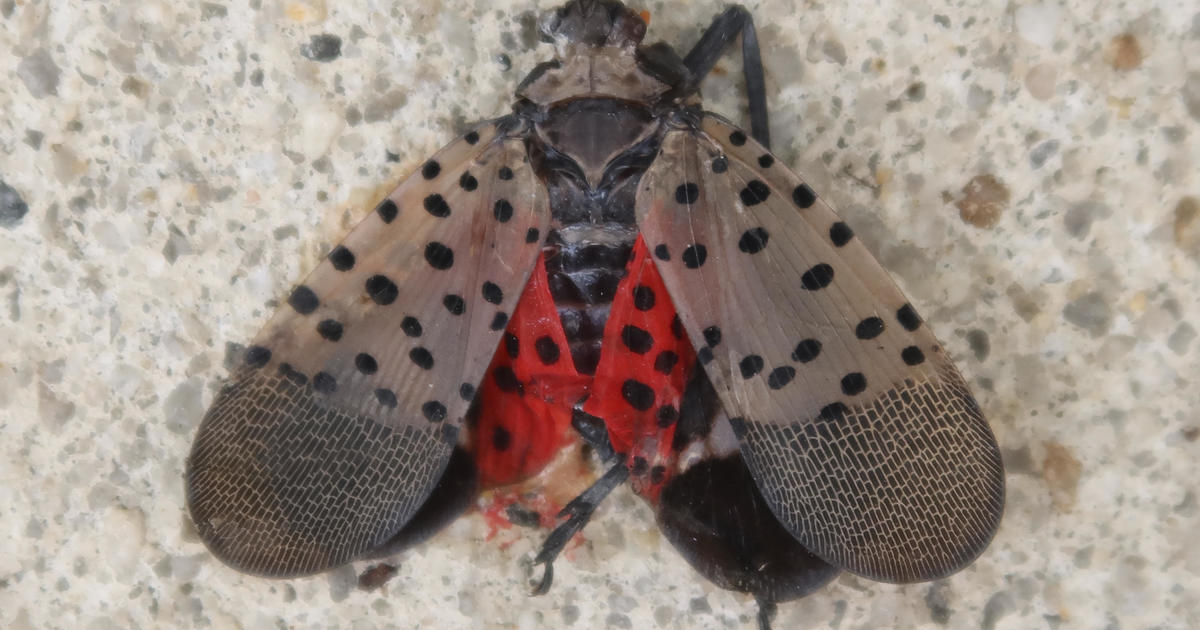The invasive species known as the spotted lanternfly has been spreading in the U.S. for nearly a decade, but federal researchers in Delaware may have found a natural predator that can potentially stop the pesky insects.
The spotted lanternfly is native to China and was spotted in Pennsylvania as early as 2014, according to the U.S. Department of Agriculture. Since then, it’s been found in 13 other states, mostly on the East Coast but also as far west as Indiana and Michigan.
The spotted lanternfly poses a threat to several fruits, including apples, grapes and peaches, as well as some trees, according to the USDA. Authorities have urged people to do whatever they can to stop the pests from spreading.
“Kill it! Squash it, smash it…just get rid of it,” reads an alert from the Pennsylvania Department of Agriculture.
Gary Hershorn/Getty Images
But Americans could get some help from two wasps from China, CBS News Philadelphia reports.
Kim Hoelmer with the USDA’s Beneficial Insects Introduction Research Unit in Delaware told the station the wasps don’t have a common name but their species name is Dryinus sinicus.
“The first of these of these wasps is a small parasitic wasp that attacks lanternfly eggs, and the second is another parasitic wasp, a little bit larger, that attacks the younger nymphal stages after the eggs hatched,” Hoelmer said.
Researchers are studying whether the wasps pose a threat to species that, unlike the spotted lanternfly, are native to the U.S.
“We don’t want these wasps to attack insects that are not causing problems in North America or are beneficial,” he said.
He told CBS News Philadelphia it may be a couple of years before the government signs off on using the wasps against the spotted lanternfly.
“We’re hopeful that we can eventually demonstrate that we’ll be able to release at least one of the natural enemies, if not both, but we’re not there yet,” Hoelmer said. “We just have to keep our fingers crossed and hope that that’s where the results will take us.”
















































